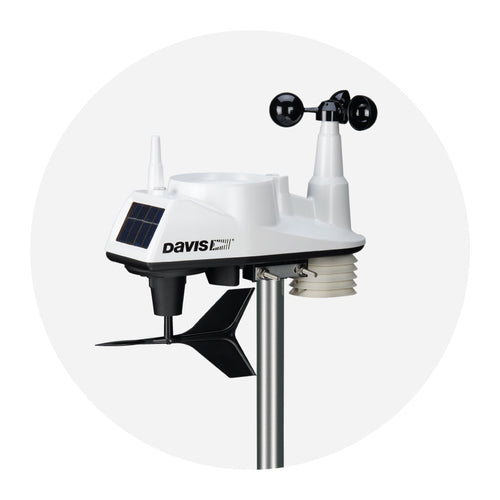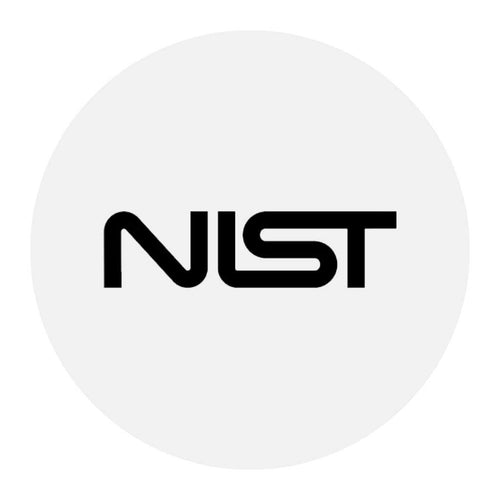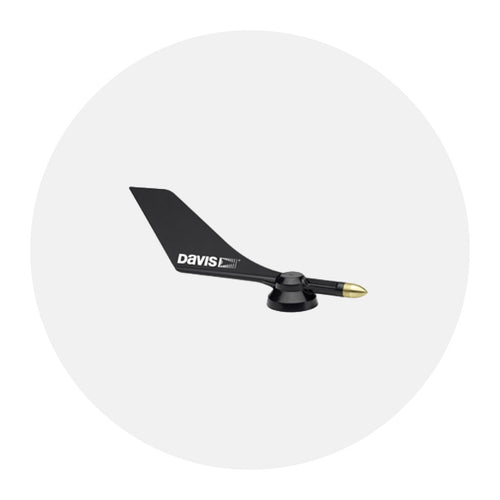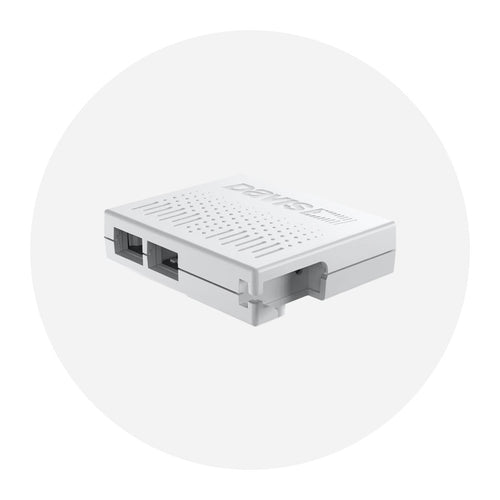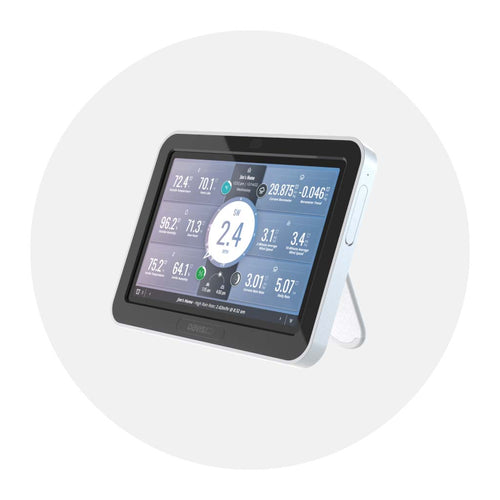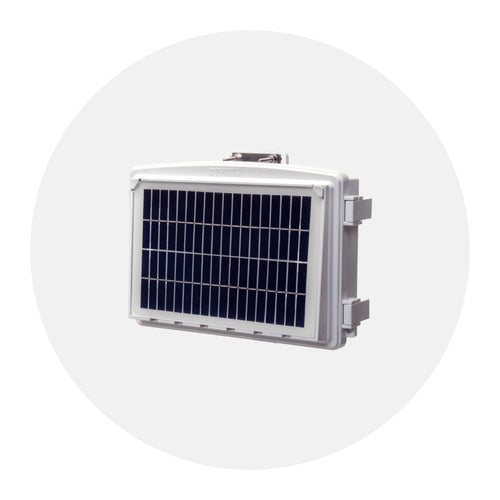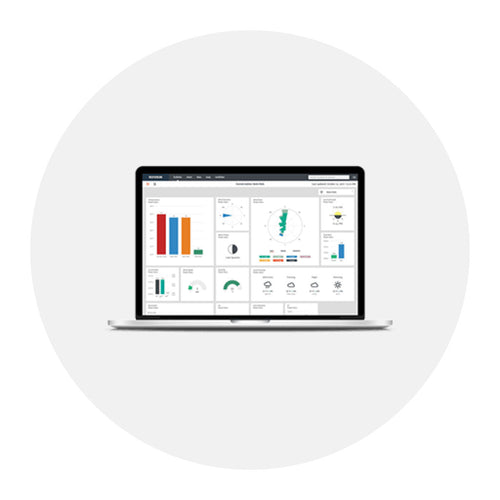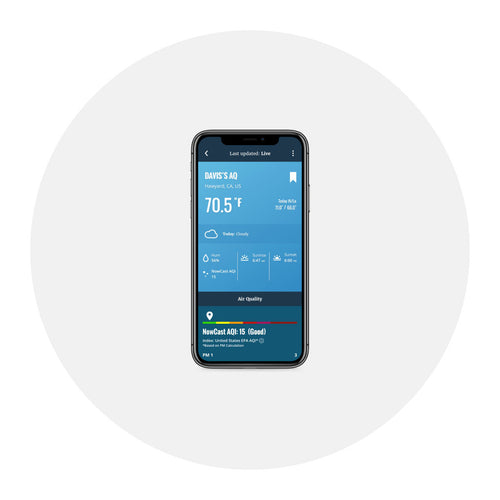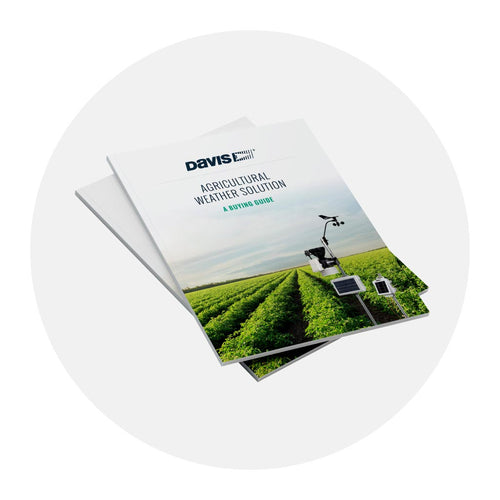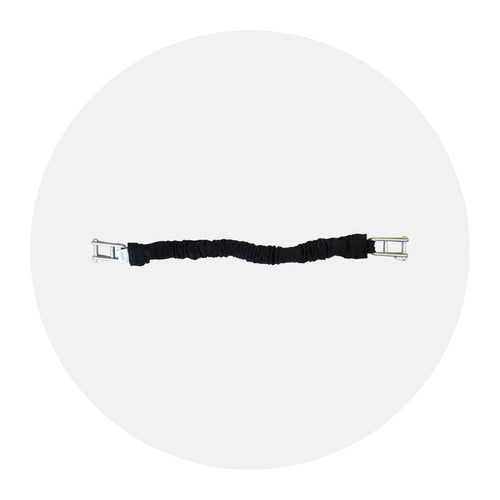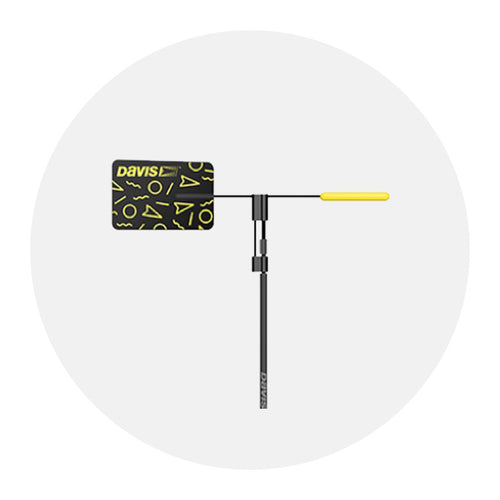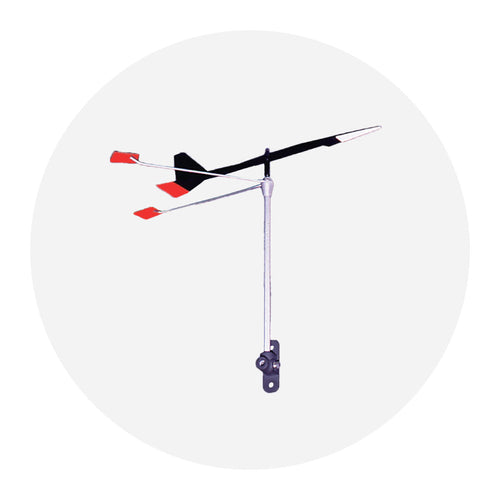
GroWeather and Mobilize Reduce Risks In Almond Orchard in California’s Central Valley
Rodney Voumard knows all about growing almonds: he knows the conditions under which they bloom and thrive, and conditions under which they struggle and fade. He grows the (arguably) most delicious nuts for Blue Diamond Almonds on his 100+-acre orchard in Ballico, situated in the sunny middle of California’s fertile Central Valley. And one of his most depended-upon tools is his Davis system: in his orchard are a Vantage Pro2 GroWeather weather station, WeatherLink Live, and Sensor Transmitters with Watermark soil moisture sensors and soil temperature probes. In his pocket: Mobilize app.
Ballico is in Northern Merced County, one of three growing regions in California which grow about 80% of the world’s almonds. The reason this is the case has a lot to do with the weather, and increasingly, with the touchy subject of water resources.
With its long hot summer, warmer winters and springs, and low rain to prevent fungal and bacterial diseases, this part of the world offers the perfect almond-growing climate outside of the Mediterranean countries like Portugal. (Australia, Rodney pointed out, while not in the Mediterranean, also has a good climate for almond growing, and is a distant second to the US in almond production. Most of those trees down under are already harvested, having bloomed in August.)
“We have a Mediterranean climate in the San Joaquin Valley,” Rodney told us. “Temperatures are moderate, but almonds also need cold. They don’t need a lot compared to other crops, but enough, and not snow. 27°F or 28°F on a cold, frosty morning is okay when the trees are dormant, but not in the teens. It is kind of a narrow band of temperatures.”

It all starts with the weather: Rodney's Vantage Pro2 GroWeather reports data from his almond orchard.
To track chilling hours, Rodney's GroWeather sends temperature and other weather data to his WeatherLink Live. Then Mobilize does all the work - tracking and reporting on chilling hours in his own orchard. But as important as tracking chilling hours is, for Rodney, it is not the most important benefit of his system. What he really depends on his system for is mitigating frost risk and helping control water use.
Frost Alerts In His Pocket
In California, almonds bloom in February, earlier than many fruit trees in the United States. A frost in the late winter or early spring can be devastating during or right after pollination.
“The flowers are pretty hardy,” he explained. “But the nutlets are not as tolerant. So this time of year, I really depend on Mobilize and WeatherLink to warn me of frost.”
As a pilot for over 40 years as well as a farmer, Rodney cares, and understands, a lot about the weather. He knows that frost can be difficult to predict.
“Sometimes you get a frost a quarter mile away, but not on your farm. There are so many factors – the temperature, wind, topography – it all matters. It’s the frost nobody forecasted we all fear. The information from my Davis system is invaluable because it validates what we think we know, and fills the gaps of what we might not.”
“I love how accessible all the data I need is with the Mobilize app. When I walk out of my house, I take the exact science for frost alerts that I can watch online, with me. I have frost alarms set and WeatherLink will text me if the temps get to 35. This gives me time to get out the door and get set up to take steps to prevent frost damage—which vary. We use water because the ground is warmer and that raises the humidity and the temperature with it. Some growers use wind machines or even hire helicopters to stir up the air, or towable, propane-fueled heaters.”
“I also depend on other farmers,” Rodney added. “We have a growers’ network of maybe 10 or so during frost season. If we see anything of concern in our orchard, we call each other. We have lots of boots on the ground. I share my data from my Davis system with them.”
In California Water is Crucial, and Controlled
After frost, the most important value of Rodney’s weather system is in irrigation decisions. In the big Central Valley, north and south, California’s limited water resources translates to very careful irrigation: using enough, but not too much, water is crucial.
“Mark Twain said whiskey is for drinking and water is for fighting over,” Rodney said, summing up how California farmers feel about water. “We just don’t have all the water we want, but what we do have is stringent controls from our state government on water use. So I watch soil moisture very carefully, using soil moisture sensors and Mobilize on my phone.”

One of Rodney's Sensor Transmitters, with soil moisture and temperature sensors. His WeatherLink Live can receive data from up to 8 transmitters.
He uses a system of wireless Sensor Transmitters, each set up with Watermark soil moisture sensors and soil temperature probes, which also send data to his WeatherLink Live.
Farms like Rodney’s, in this valley of sunshine and dry air, keep the whole world munching on the nutritious nuts and make almonds the largest agricultural export in the state. Keeping these thirsty trees growing on increasingly restricted water controls takes experience, data, more data, and the ability to access that data, 24/7. Davis sensors and Mobilize fill the bill.
Rodney is proof that a Davis weather station or an EnviroMonitor system can make your farm more efficient and profitable. A good place to start? Start with a weather station like GroWeather. Then consider an EnviroMonitor Starter Bundle (choose your communication method, Wi-Fi or cellular). If like Rodney, frost is your main focus, add a Frost Forecast Bundle or an Irrigation Bundle.
(Smile for the day: According to Rodney, he grows “a-monds” not “aLL-monds.” Who knows the old joke about why some people drop the “l” sound? ‘Cause when they harvest, almond growers shake the “l” out of their trees.)
In the face of escalating environmental risks, AEM is the essential source for insights on weather, climate, lightning, floods, wildfires, water management, and more.
Learn more about AEM and all of our solutions here.


